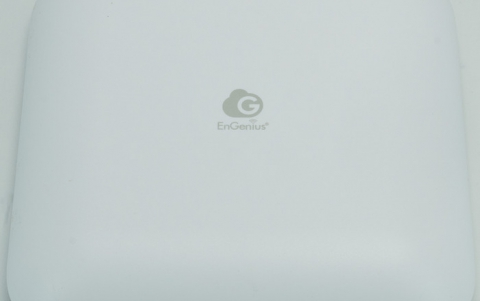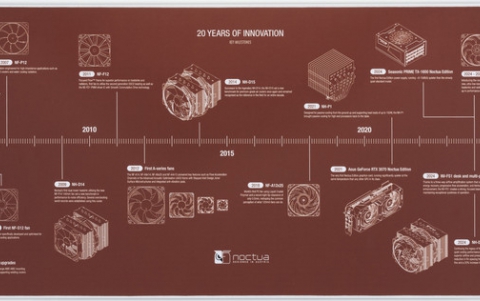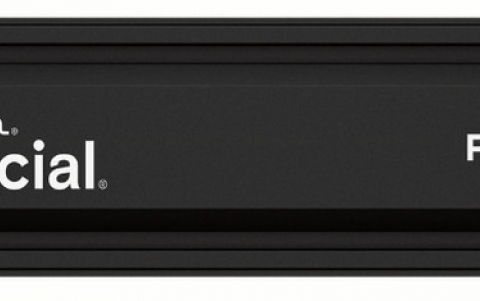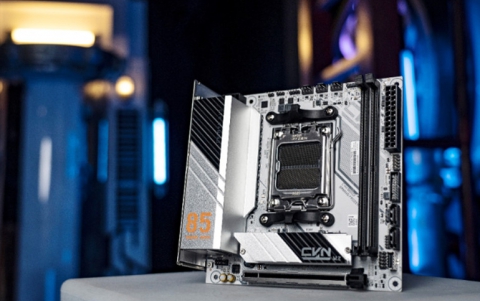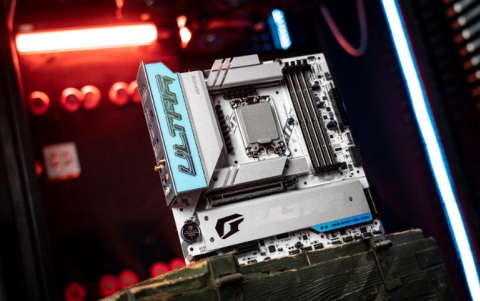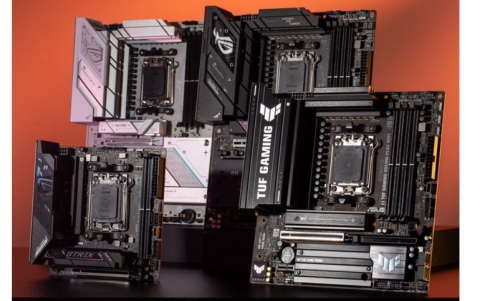The DaTARIUS DVD Analyzer R 2x
2. Analogue Signals
Review Pages
 With CD and DVD, the data structure is based on the time period or "T". On the High Frequency (HF) signal of the CD, we can find pits and lands whose lengths range from T3 to T11. It means that the shortest information element (T3) has a length three times the length of one period, where T has a length of 231 nanoseconds. In order to achieve a higher data rate, DVD uses "T" or a period of 38.2 ns. This equals an approximate data rate increase of six times that of the audio CD. The HF signal of DVD presents T3 to T11 pits and lands, but also T14.
With CD and DVD, the data structure is based on the time period or "T". On the High Frequency (HF) signal of the CD, we can find pits and lands whose lengths range from T3 to T11. It means that the shortest information element (T3) has a length three times the length of one period, where T has a length of 231 nanoseconds. In order to achieve a higher data rate, DVD uses "T" or a period of 38.2 ns. This equals an approximate data rate increase of six times that of the audio CD. The HF signal of DVD presents T3 to T11 pits and lands, but also T14.
- I14H - Reflectivity
The continuously measured signal, reported for every megabyte of data. It is equal to the highest possible reflection measured on a T14 land. Below you can see an illustration of the HF signal (eye-pattern I14H).

The I14H signal is related to:
- the dye layer thickness and absorption
- reflectivity and also thickness of the reflective layer
- the transmission of the substrate
- the optical laser power (usually automatically regulated and normalized within the pick-up unit).
Too low a value of reflectivity may result in problems with the read-out of the data. The signal is defined by several features related to the design of the whole DVD+R/-R discs. The primary cause of an actual value of I14H should always be looked for in the dye or recording material. One should consider the dye thickness, but in addition, the recording mechanism seen through the HF signals modulation values. The other reason may be simply the thickness of the reflective metal layer. This may be confirmed quickly by checking the transmission of light through the disc.
| Specification | DaTARIUS | ||
| Limits DVD+R/-R DVD-5 | Min | 0.45 | 0.45 |
| Max | 0.85 | 0.85 | |
| Limits DVD-9 | Min | 0.18 | 0.18 |
| Max | 0.30 | 0.30 | |
| Measured | From | 0 | |
| To | 1 | ||
| Decimal places down | 3 | ||
Note that the signal I14H is equal to the signal R14H. The difference is that the R14H signal is measured only on given positions, defined in the program area (lead-in, lead-out, middle and data area).
-
I14Hrv - I14H Variation Within One Revolution
The signal reflects the I14H variation within one revolution of the disc.
I14Hrv = (I14H max - I14H min) / I14H max
The continuously measured value was introduced to verify the variations in the metallization layer along one revolution.
Effectively this parameter expresses a local variation of disc reflectivity. Being a continuously measured value it was introduced to verify the variations in the thickness of the dye layer and metal mirror layer along one revolution. It is related to the homogeneity of dye coating and/or reflective metal coating.
| Specification | DaTARIUS | ||
| Limits DVD+R/-R/-RW/ DVD-5/ DVD-9 | Max | 0.15 | 0.15 |
| Limits DVD+RW | Max | 0.25 | |
| Measured | From | 0 | |
| To | 1 | ||
| Decimal places down | 3 | ||
-
I14M - I14 Normalized Modulation
I14M = I14 / I14H (normalized I14)
The I14 amplitude is detected by measuring the level difference of the HF signal in the moment the laser beam passes a T14 land or T14 pit. Normalizing compensates influences from media (like variation of reflectivity) and /or the drive (different laser power). Due to normalization, the value becomes dimensionless. The property is also called I14 Modulation. For recordable media it is related to the recording mechanism within the disc.
The actual value of the I14M signal is linked directly with the mark recording, as as such with the dye recording properties itself, dye thickness in groove, and the groove dimension. In the lesser level it can be related to the reflective layer thickness, its thermal conductive properties and even the type and thickness of lacquer or bonding material.
| Specification | DaTARIUS | ||
| Limits DVD+R/-R/RW | Min | 0.6 | 0.6 |
| Max | |||
| Measured | From | 0 | |
| To | 1 | ||
| Decimal places down | 2 | ||
-
I3M - I3 Normalized Modulation
Not directly mentioned in the specifications, but expressed through the parameter called resolution.
I3M = I3 / I14H
The continuously measured value reported for every megabyte of data represents the normalized I3 amplitude: in other words, it describes the signal coming from the shortest recorded spots.
Too low or too high a value of I3M is seen in the slicing level and signal asymmetry value. This signal is very sensitive to the length od space/land and length of spot preceding it. The effect is called inter symbol interference (ISI). The value is coupled with the overall disc design. In practice, should it require any correction, one should look at:
- The dye, its properties and thickness in the groove
-The groove depth and width
- The reflective layer metal layer (less critical)
No limits specified for I3M.
-
RES - Resolution
The Resolution signal is a relation of the amplitude of I3 and I14 (see previous graph).
RES = I3 / I14
In other words, this is the ratio of the HF modulation corresponding to I3 and I14 recorded spots.
A high resolution is preferred in order to make a clear distinction between I3 and I14 signals. A high resolution means well defined I3 marks. These marks are always the most sensitive to any changes in the media itself, in the recording strategy and even to the sequence of marks recorded directly before. Any causes lying behind a low value of resolution are similar to the behavior of other modulation types of signals described above. What should be emphasized is that the recording of I3 marks is one of the most difficult, and most sensitive to manufacturing process and recording method. A systematic low value of resolution is most probably caused be the deficiency of the dye and /or the process. The reason can be the dye itself, the groove design or the dye thickness or metal reflective layer thickness. The actual applies writing strategy can also influence recorded marks formulation, and particularly strongly, the shortest one, such as I3. However, its medium has its own optimized set of writing pulses which are implemented in the disc information, and possibly used by the recorder firmware. So any modification on this element would require a new master and eventually, consultation with the drive supplier.
| Specification | DaTARIUS | ||
| Limits DVD+R/-R/RW DVD-5 | Min | 0.15 | 0.15 |
| Max | |||
| Limits DVD-9 | Min | 0.20 | 0.20 |
| Max | |||
| Measured | From | 0 | |
| To | 1 | ||
| Decimal places down | 2 | ||
-
ASY - Asymmetry
The asymmetry signal (ASYd) reflects the relation of the position of I3-signal's mid-value to I14-signal's mid value.
ASYd = (I14H + I14L) - (I3H + I3J) / 2 * (I14H - I14L)
The signal is continuously measured and reported for every megabyte.
The importance of asymmetry lies in its value in determining the slicing level in the further signal processing chain. Subsequently, this leads to a determination of the signal values including deviation and Jitter as well as digital errors. This leads to the definition of the writing strategy. Each writing strategy (different for each writing speed) is encoded in the blank disc through pre-pits or wobble phase modulation (+R), or implemented in the recorder drive firmware. noticing high or low value of asymmetry can have several causes, such as:
- The drive is defective
- Media properties: dye, dye thickness, groove geometry, metal mirror layer, are out of particular media technology limits.
| Specification | DaTARIUS | ||
| Limits DVD+R/-R/RW/DVD-5 / DVD-9 | Min | -0.05 | -0.05 |
| Max | 0.05 | 0.05 | |
| Measured | From | -0.25 | |
| To | 0.25 | ||
| Decimal places down | 1 | ||
TSC - Track Crossing Signal
This signal is evaluated in the 'open loop' mode, which happens while the DVD is spinning and the focused laser beam passes the track at right angles. The HF signal is fed through a low pass filter and the modulation of the signal is detected. The modulation results because the average reflection between the tracks is higher than on the track. This means that the modulation of the signal is a value for the cross-talk of adjacent tracks.
TCS is directly related to basics like dye layer thickness in groove against dye thickness on land, dye leveling, groove geometry and its molding quality. It does not depend on reflective metal layer thickness or bonding quality.
| Specification | DaTARIUS | ||
| Limits DVD+R/-R/RW DVD-5 | Min | 0.10 | 0.10 |
| Max | |||
| Limits DVD-9 | Min | 0.20 | 0.20 |
| Max | |||
| Measured | From | 0 | |
| To | 1 | ||
| Decimal places down | 3 | ||
Review Pages






